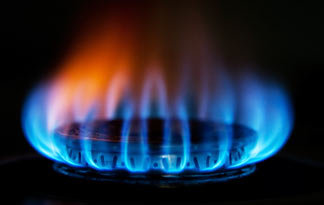
Breaking News
 Nancy Pelosi has officially announced her RETIREMENT at the end of her term, January 3, 2027.
Nancy Pelosi has officially announced her RETIREMENT at the end of her term, January 3, 2027.
 Omeed Malik: The Technocrat Muslim Billionaire Inside MAGA
Omeed Malik: The Technocrat Muslim Billionaire Inside MAGA
 Democrat-led government shutdown is now causing flight delays, threatening air traffic control,...
Democrat-led government shutdown is now causing flight delays, threatening air traffic control,...
Top Tech News
 HUGE 32kWh LiFePO4 DIY Battery w/ 628Ah Cells! 90 Minute Build
HUGE 32kWh LiFePO4 DIY Battery w/ 628Ah Cells! 90 Minute Build
 What Has Bitcoin Become 17 Years After Satoshi Nakamoto Published The Whitepaper?
What Has Bitcoin Become 17 Years After Satoshi Nakamoto Published The Whitepaper?
 Japan just injected artificial blood into a human. No blood type needed. No refrigeration.
Japan just injected artificial blood into a human. No blood type needed. No refrigeration.
 The 6 Best LLM Tools To Run Models Locally
The 6 Best LLM Tools To Run Models Locally
 Testing My First Sodium-Ion Solar Battery
Testing My First Sodium-Ion Solar Battery
 A man once paralyzed from the waist down now stands on his own, not with machines or wires,...
A man once paralyzed from the waist down now stands on his own, not with machines or wires,...
 Review: Thumb-sized thermal camera turns your phone into a smart tool
Review: Thumb-sized thermal camera turns your phone into a smart tool
 Army To Bring Nuclear Microreactors To Its Bases By 2028
Army To Bring Nuclear Microreactors To Its Bases By 2028
 Nissan Says It's On Track For Solid-State Batteries That Double EV Range By 2028
Nissan Says It's On Track For Solid-State Batteries That Double EV Range By 2028
New method quickly converts natural gas into solid form for storage

The process can be done in just 15 minutes using a low-toxicity mixture.
It may be a fossil fuel, but natural gas remains a key energy source for now, and some argue it might help us bridge the gap towards more renewable energy. It still has its problems though – the stuff can be hazardous to store or transport, and it is often converted into liquid form to make it easier to work with. However, that requires extremely cold temperatures of around -162 °C (-260 °F).
An emerging method is to instead convert the gas into a solid for easier transport and storage. In fact, nature already does this under certain conditions, as molecules of natural gas can become trapped in "cages" of water molecules, forming what are known as gas hydrates or combustible ice. It's far from a quick process though, taking upwards of millions of years.
Researchers have been trying to speed that up, and now the NUS team claims the fastest conversion time on record. The key ingredient in the new mixture is L-tryptophan, an amino acid that speeds up the reaction rate and traps more of the gas into solid hydrates faster. Taking just 15 minutes, the team says the new method is more than twice as fast as the current standard.
"Our breakthrough can really be put into perspective when you consider that it takes millions and millions of years for gas hydrates to form in nature, yet with our correct addition of secret ingredients to the system in small quantities, the same process can be effected in the laboratory in a matter of minutes," says Gaurav Bhattacharjee, an author of the study.
The end product is much more convenient and safer to store and transport. As a block of ice it's shrunk in volume by 90 times, and is non-explosive and stable enough to be stored in a regular freezer at -5 °C (23 °F). The new method also apparently requires less toxic additives than usual.

 The Technocratic Dark State
The Technocratic Dark State Carbon based computers that run on iron
Carbon based computers that run on iron

